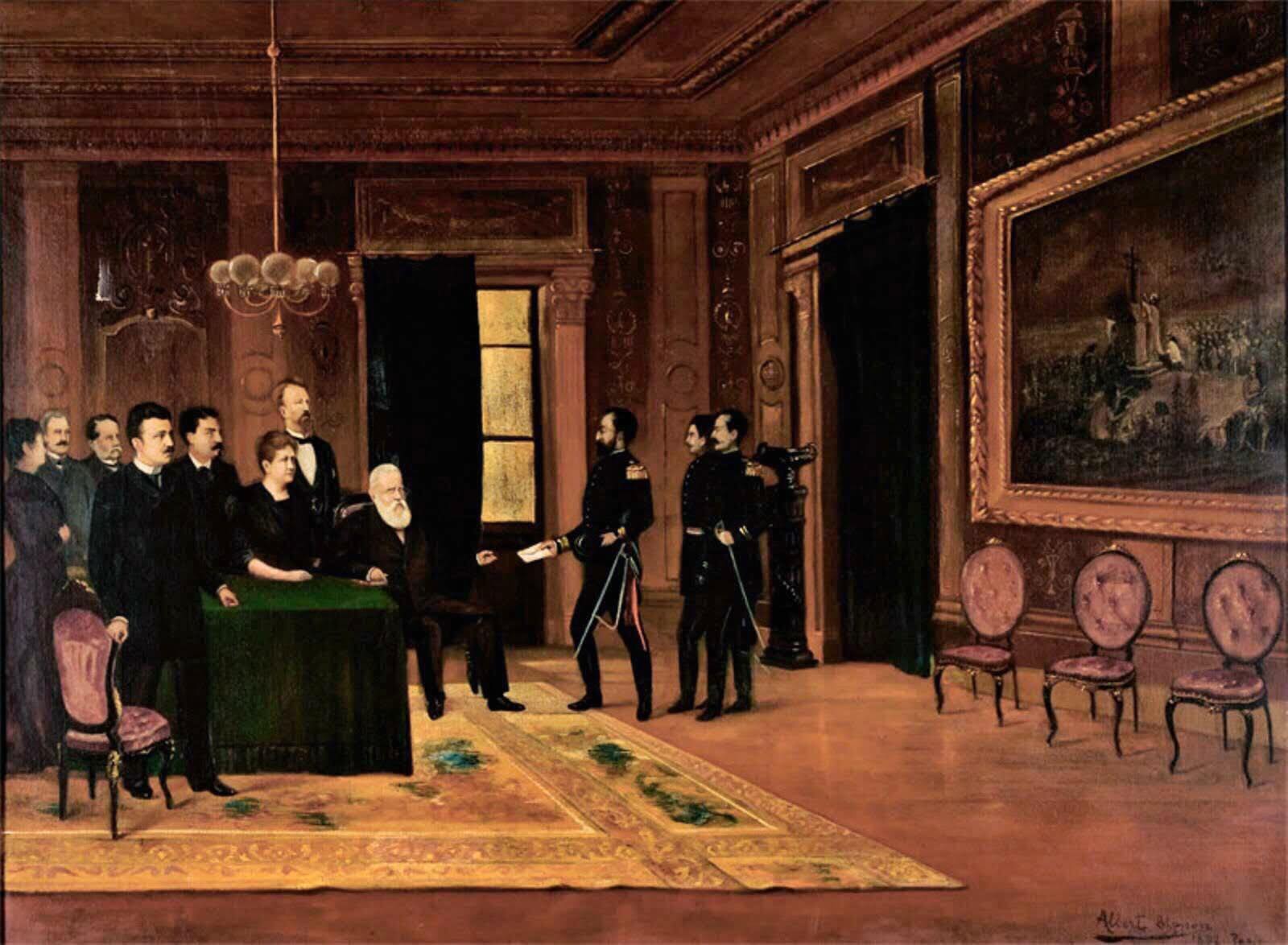Many reasons led to the coup d’état in 1889, and it is no secret that Dom Pedro II was the greatest statesman Brazil ever had. He spoke multiple languages, was highly educated, and had a penchant for innovation and technology. At the international fair in the United States, he was the one who received the first telephone call from Graham Bell, drawing the world’s attention to this great inventor. He was someone who loved inventions.

One point that must be understood is that the monarchy was respected and revered throughout Brazil. Its image started to be tarnished and criticized in the late 19th and early 20th centuries, mainly by Floriano Peixoto and, especially, by Getúlio Vargas. They destroyed its cultural foundation, created heroes out of thin air, and changed the narrative, attempting to tear down everything that was built during the Empire. They portrayed Dom Pedro I as a womanizer, an excessive philanderer, and forgot the fact that he was a warrior, well-educated, with a military background, who was still very young at the time of Brazil’s Independence. He fought in several battles, including against his own brother, and his figure deserves a more thorough study because people often focus on his vices and forget about his virtues.
Dom Pedro II was not a skilled military warrior, and by the time of the Republic Coup, he was already old. In 1840, when he ascended to the throne as emperor, he was 15 years old, so in 1889, he was 64 years old, which was quite old considering the life expectancy of the time was around 30 years – today it reaches 72 years. Therefore, when the coup occurred, led by Marshal Deodoro, a subdued general with no will or active participation, Dom Pedro II was at the limit of his life and in declining health. Deodoro had been strongly influenced by Benjamin Constant Botelho de Magalhães (1837-1891), known as “The Bad,” a professor at the Superior War School, who wanted to establish a republic in Brazil.
Troops throughout Brazil began to learn about the situation and revolted against the Army’s decision. In Bahia, for instance, Deodoro’s brother, who opposed the coup and was subordinate to the commander-in-chief, the emperor, also rebelled. However, everything happened very quickly, and there was no time for the troops to gather around the emperor and protect him. In just two days, he and his family were sent into exile in Europe. To give an idea of how much he was admired, when Dom Pedro II died in 1891, his funeral in Paris was attended by more than 30,000 people. Heads of state from various parts of the world came to pay their last respects.
We must not forget to mention one of the main reasons for the strengthening of the republican party: the end of slavery and the impasse regarding compensation to slave owners. In other words, what was extremely favorable to the monarchy’s image would lead to its bankruptcy. It took a while to believe that slavery could end because it was the country’s industrial base, and labor was typically enslaved. According to the Overton Window Theory, which states that every idea progresses from the “impossible” to the “necessary,” what once seemed impossible – abolishing slavery – became necessary in two or three days, which was the time the votes in the National Assembly lasted.
But it is important to remember that, since Dom Pedro I, the imperial family has been against the slaveholding regime, especially Princess Isabel, who not only took the lead by signing the Golden Law but also participated in abolitionist events with her children. The fact that she was married to a foreigner may have been one of the biggest issues during her potential third reign. It was difficult for a princess to marry a commoner because she would lose her right to the throne.
She married the Count d’Eu, and many had prejudice against the possibility of a foreigner taking the Brazilian throne, despite constitutional protection, someone who had replaced the Duke of Caxias as Commander-in-Chief of the Army during the Paraguayan War, much to the displeasure of many military officers. Without the support of the military and the slaveholders, Dom Pedro II would, therefore, face the coup that would dethrone him and turn Brazil into a republic of numerous coups and seven constitutions.
Reference: MARINHO, Rodrigo Saraiva. A história do Brasil pelas suas constituições. Brazil: LVM Editora, 2023.

Matheus Araújo
Matheus Araújo is the founder and editor of Brazilian History. Born in Rio de Janeiro and holding a degree in Advertising and Marketing, his passion for history led him to enroll at the Federal University of the State of Rio de Janeiro, where he is currently pursuing a degree in History Education.
